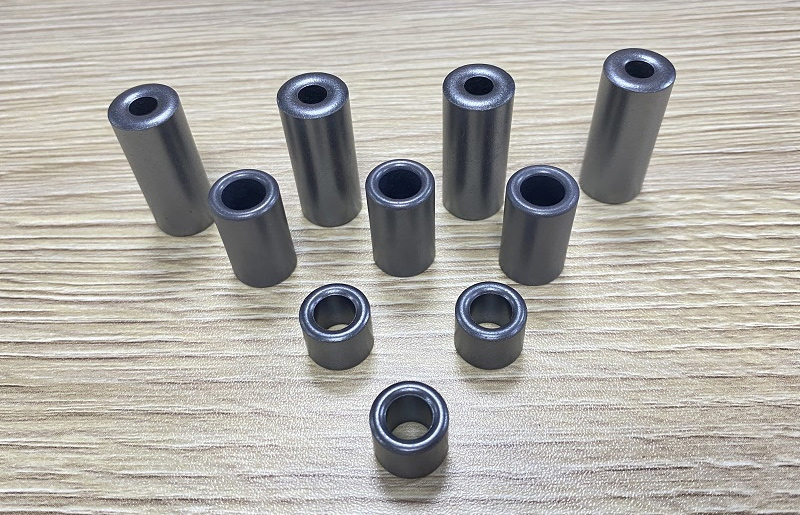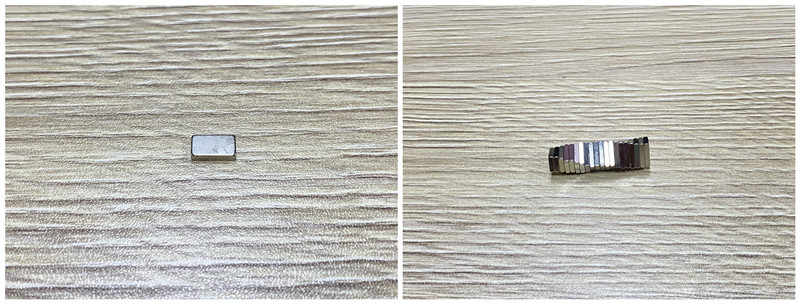Ferrite is a metal oxide with ferromagnetism, sintered from iron oxide and other ingredients. According to different magnetic properties and applications, ferrite can be roughly divided into five types: soft magnetic, permanent magnetic, rotational magnetic, moment magnetic, and piezoelectric magnetic.
In terms of electromagnetic properties, the resistivity of ferrite is much higher than that of metal and alloy magnetic materials, and it also has higher dielectric properties. Its magnetic properties exhibit high magnetic permeability at high frequencies, making ferrite a widely used non-metallic magnetic material in the field of high-frequency weak current. Because the magnetic energy stored in the unit volume of ferrite is low, and the saturation magnetization is also low (usually only 1/3~1/5 of pure iron), its application in low-frequency strong electricity and high-power fields requiring high magnetic energy density is limited.
1、 Soft magnetic material
This type of material is prone to magnetization and demagnetization under weak magnetic fields, such as zinc chromium ferrite and nickel zinc ferrite magnetic rings. Soft magnetic ferrite is a type of ferrite material with a wide range of applications, varieties, large quantities, and high output value. It is mainly used as various inductance components, such as filter cores, transformer cores, wireless electromagnetic cores, as well as magnetic tape recording and recording heads, and is also a key material for magnetic recording components.
2、 Permanent magnet material
A compound with a hexagonal structure with uniaxial anisotropy. Barium, strontium and lead ferrites and their composite solid solution can be divided into isotropic and anisotropic magnets. Since these ferrites can retain strong constant remanence properties for a long time after the external magnetization field disappears, they can be used to generate stable magnetic fields in external space. They are widely used, for example, in various meters, generators, telephones, loudspeakers Used as a permanent magnet in television and microwave devices.
3、 Gyromagnetic material
The rotational magnetism of magnetic materials refers to the phenomenon that, under the action of two mutually perpendicular stable magnetic fields and electromagnetic wave magnetic fields, a plane polarized electromagnetic wave propagates in a certain direction within the material, but its polarization plane continuously rotates around the propagation direction. Although metal and alloy materials also have a certain degree of rotational magnetism, due to their low resistivity and large eddy current losses, electromagnetic waves cannot penetrate into their interior, making them unusable. Therefore, the application of rotational magnetism in ferrite rotational magnetic materials has become a unique field for ferrite. Most gyromagnetic materials, along with waveguides or transmission lines that transport microwaves, form various microwave devices, mainly used in electronic devices such as radar, communication, navigation, and telemetry.
4、 Moment magnetic material
This refers to ferrite materials with rectangular hysteresis loops, which are characterized by being magnetized and reaching saturation when subjected to a small external magnetic field. After removing the external magnetic field, the magnetism remains the same as when saturated. Such as magnesium manganese ferrite, lithium manganese ferrite, etc., this type of ferrite material is mainly used in various electronic computer memory cores and other aspects.
5、 Piezomagnetic material
This type of material refers to ferrite materials that mechanically elongate or shorten in the direction of the magnetic field during magnetization, such as nickel zinc ferrite, nickel copper ferrite, and nickel chromium ferrite. Piezomagnetic materials are mainly used as transducers for the mutual conversion of electromagnetic and mechanical energy, and as magnetostrictive elements for ultrasound.





